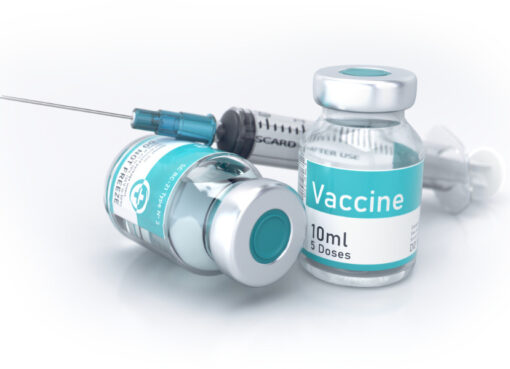In the realm of preventive healthcare, influenza, or the flu, remains a significant public health concern. Each year, seasonal flu outbreaks impact millions of people globally, leading to a range of symptoms from mild discomfort to severe illness.
One of the most effective measures to reduce the risk and severity of influenza is vaccination. However, not all flu vaccines are created equal.
In this article, we delve into the diverse landscape of flu vaccines, exploring the different types available and their unique characteristics.
Understanding the Importance of Flu Vaccination
The Impact of Influenza
Influenza is a highly contagious respiratory illness caused by influenza viruses. It can lead to a spectrum of symptoms, including fever, cough, sore throat, body aches, and fatigue. In severe cases, influenza can result in hospitalization and, in some instances, death.
The Role of Flu Vaccination
Flu vaccination plays a pivotal role in preventing influenza and reducing the severity of symptoms for those who still contract the virus. By stimulating the immune system to produce antibodies, the vaccine prepares the body to fight off specific strains of influenza viruses.
Types of Flu Vaccines
Inactivated Influenza Vaccines (IIV)
Inactivated influenza vaccines contain viruses that are no longer alive. These vaccines are administered through injection and are suitable for individuals aged six months and older. They come in various formulations, including standard-dose, high-dose, and adjuvanted vaccines.
Live Attenuated Influenza Vaccine (LAIV)
LAIV contains weakened live influenza viruses and is administered as a nasal spray. It is an option for healthy individuals aged two to 49 years who are not pregnant. LAIV aims to stimulate an immune response without causing illness.
Recombinant Influenza Vaccine
Recombinant influenza vaccines are produced without using live influenza viruses. Instead, they are created by genetically engineering a virus component. This type of vaccine is suitable for individuals aged 18 years and older and is available as an alternative to traditional inactivated vaccines.
Quadrivalent and Trivalent Vaccines
Flu vaccines are categorized based on the number of virus strains they protect against. Quadrivalent vaccines target four influenza strains (two influenza A and two influenza B), while trivalent vaccines focus on three strains (two influenza A and one influenza B).
High-Dose Influenza Vaccine
High-dose influenza vaccines are designed for individuals aged 65 and older. These vaccines contain a higher concentration of antigens, aiming to enhance the immune response in older adults who may have a weakened immune system.
Adjuvanted Influenza Vaccine
Adjuvanted influenza vaccines contain an adjuvant, an additional component that enhances the body’s immune response to the vaccine. This type of vaccine is often used in older adults to improve vaccine effectiveness.
Egg-Free Influenza Vaccine
Some individuals may be allergic to eggs, a common medium used in the production of traditional influenza vaccines. Egg-free influenza vaccines, produced without using eggs, provide an alternative for individuals with egg allergies.
Tailoring Flu Vaccines to Specific Populations
Pediatric Flu Vaccines
Flu vaccines for children are formulated to provide effective protection while considering the age-specific needs of pediatric populations. These vaccines may come in lower-dose formulations or as nasal sprays for eligible age groups.
Pregnant Individuals
Pregnant individuals are at an increased risk of complications from influenza. Inactivated influenza vaccines, including the standard and adjuvanted formulations, are recommended during pregnancy to protect both the pregnant person and the developing fetus.
Individuals with Chronic Conditions
Individuals with certain chronic conditions, such as diabetes or heart disease, may benefit from specific formulations of flu vaccines. Consultation with healthcare providers helps determine the most suitable vaccine for those with underlying health conditions.
The Dynamics of Annual Flu Vaccine Recommendations
Strain Selection
Influenza viruses undergo constant changes, necessitating annual updates to the flu vaccine. Global surveillance helps identify the prevalent strains, and vaccine formulations are adjusted accordingly.
Seasonal Timing
The flu vaccine is typically administered before the start of the flu season, providing individuals with optimal protection. It takes about two weeks for the body to develop a robust immune response after vaccination.
The Future of Flu Vaccination
Ongoing Research and Development
Research and development in the field of influenza vaccines continue to explore new technologies and strategies for vaccine production. This includes the investigation of universal flu vaccines that provide broader and longer-lasting protection.
Increased Accessibility
Efforts to improve vaccine accessibility, including community-based vaccination clinics and outreach programs, aim to enhance coverage across diverse populations. These initiatives contribute to reducing the overall burden of influenza.
A Diverse Arsenal Against Influenza
As influenza remains a persistent global health challenge, the diversity of flu vaccines available reflects the ongoing efforts to tailor preventive measures to different populations and health needs. Whether it’s inactivated vaccines, live attenuated vaccines, or specialized formulations for specific age groups, the array of flu vaccines allows healthcare providers to customize vaccination strategies.





